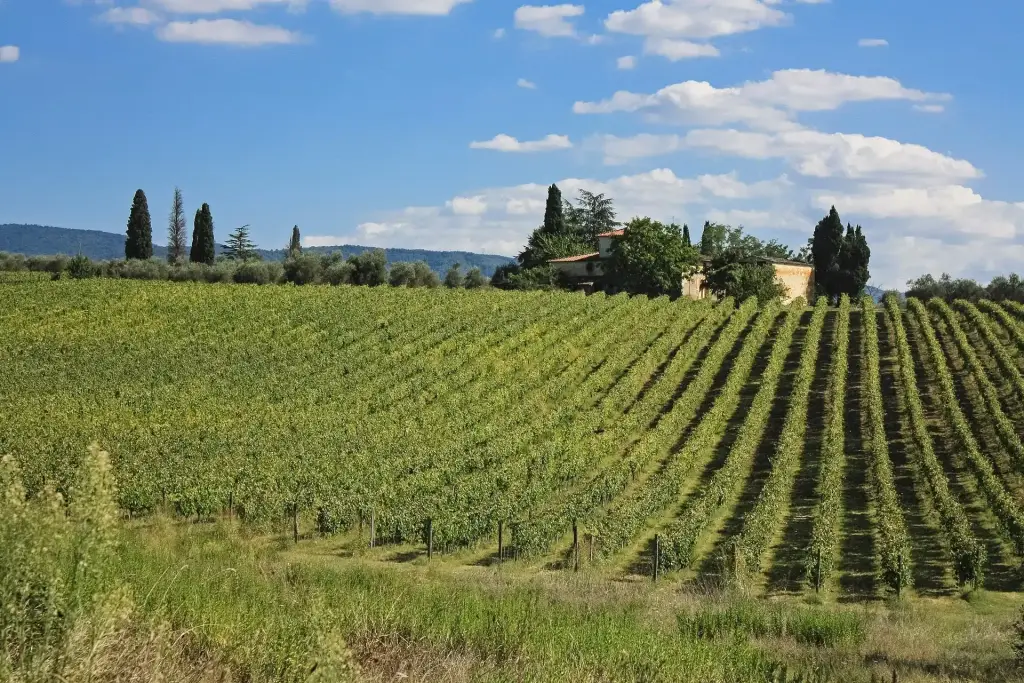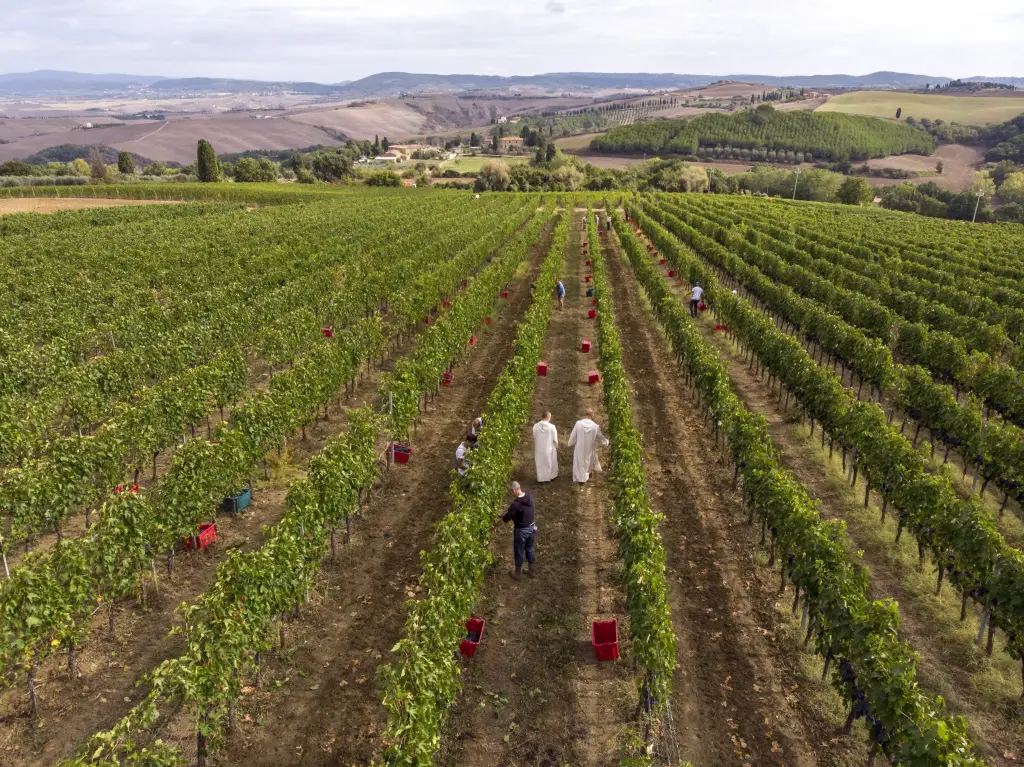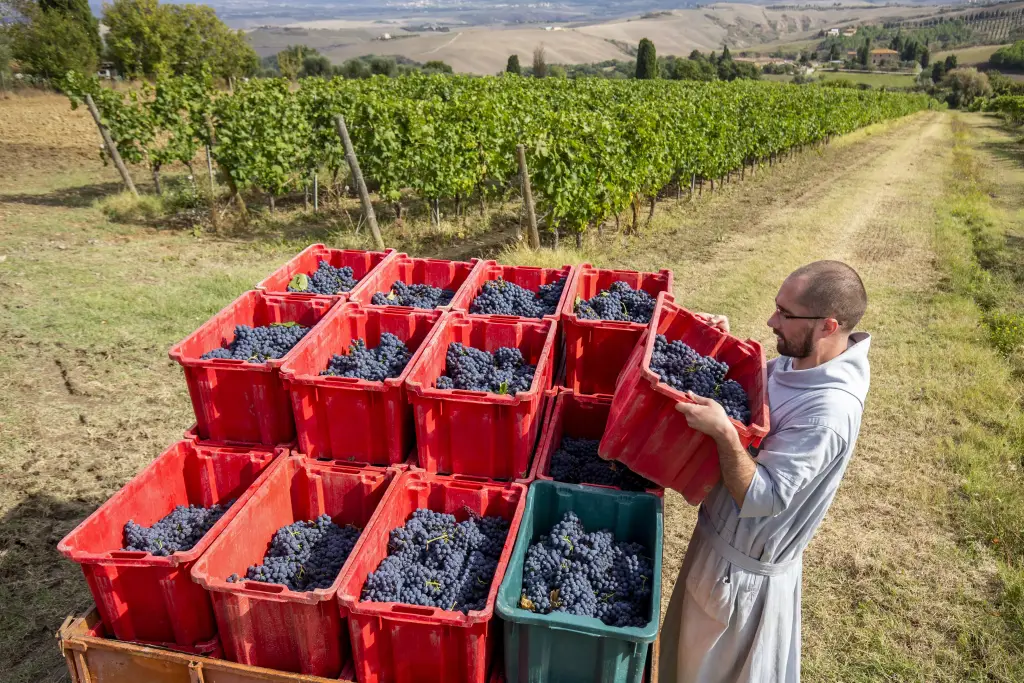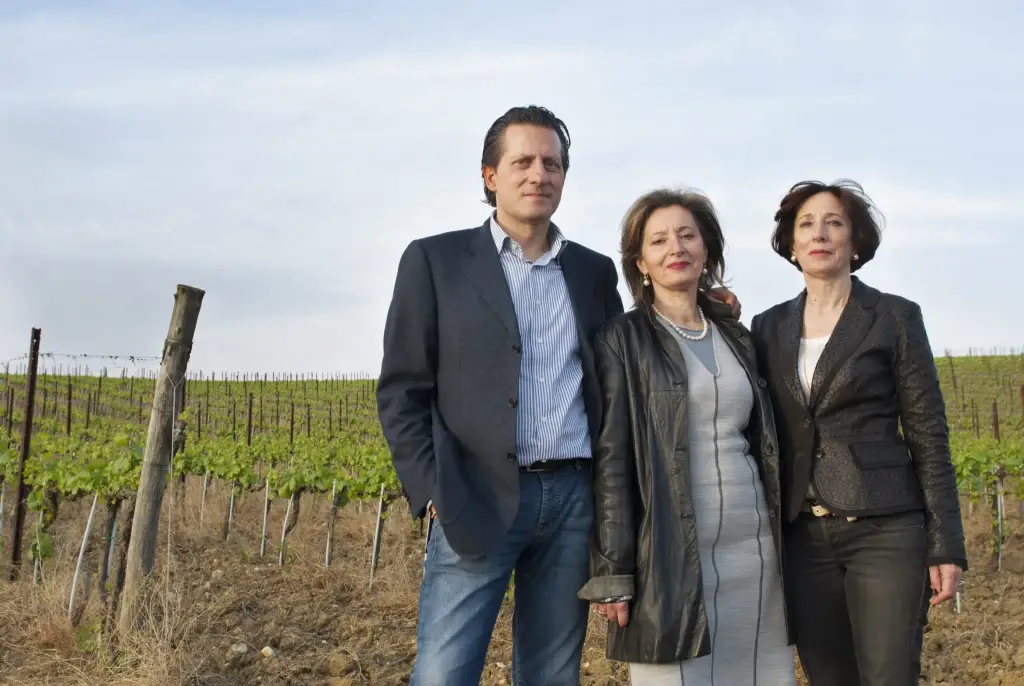WINE, IN THE LAND OF THE GRANCE SENESI THE GIUDE OF THE DOC IS A BENEDICTINE MONK
The young denomination was born from the passion of a group of winemakers led by Gabriele Giovannini and among its partners is has the Abbey of Monte Oliveto Maggiore.
/Raffaella Galamini – see original article
Tuscany is the cradle of the DOCs, the supremacy of its wines is unquestionable. A land where, among the large companies of Chianti, Brunello and Nobile there is also room for a small denomination: the DOC of the Grance Senesi. At the helm of the association, proof of how Tuscany is always surprising, is an unusual president to say the least. In fact it is a Benedictine monk.
The Grance Senesi Doc is in fact led by the Guatamalan Don Antonio Bran, manager of the farm of the Abbey of Monte Oliveto Maggiore in Asciano. The monastery has adhered to the Grance Senesi project from the beginning.
The DOC vineyards are mostly located in the Crete Senesi area, and in particular in the municipalities of Asciano, Monteroni d’Arbia, Rapolano Terme, Murlo and Sovicille. So also on the vast grounds of the Abbey which has about 850 hectares of woods and cultivated land.

THE COMMITTMENT OF GABRIELE GIOVANNINI
The denomination was born out of the passion of a handful of winemakers led by Gabriele Giovannini, owner of the Armaiolo Estate. Over the years it was Gabriele who committed himself to the recognition of DOC. It was in 2006 when by fate, or perhaps it is appropriate to say providence, he had the opportunity to meet Fabio Pascucci Pepi of the Modanella castle. It was he who introduced him to the then Abbot General of Monte Oliveto Maggiore Michelangelo Tiribilli. Thus was born the membership of the Abbey.
Over the years the nascent DOC has always enjoyed good fortune. Many believed in the future of the Grance Senesi DOC and thus official recognition arrived in 2010.
“To date, the production of the Grance Senesi DOC is around 10,000 bottles but the potential is at least about 400,000. Today the hectares dedicated to DOC are about fourty” underlines Mr. Giovannini. In short, there is ample room for growth to make the de nomination known and to appreciate the peculiarities and prestigious background. Of course, there is no shortage of competition.

IN THE LANDS OF CHIANTI, NOBILE AND BRUNELLO
The denomination of the Grance Senesi insists in an area particularly suited to viticulture. A point in favour of the DOC but also a double-edged sword. It finds itself surrounded by the market’s most formidable opponents: on one part all the area of Chianti with the Gallo Nero vineyards, and on the other, Montalcino with Brunello and the Red and a little further on Montepulciano with Nobile.
In spite of a history spanning over seven centuries, the denomination therefore seeks to emerge in a world of Tuscan labels. To date, membership is decidedly contained: Modanella castle, Armaiolo agritourism estate, Abbey of Monte Oliveto Maggiore, Masciello Estate and the Trabalzini brothers. On one hand Ms. Giovannini with her company, and on the other, the monks of Monte Oliveto Maggiore who guide the steps of the consortium.

GRANCE SENESI, REGULATIONS
The young DOC takes its name from the “Grance Senesi“, the ancient farms and fortified granaries particularly widespread south of Siena. The Grance Senesi denomination of controlled origin is reserved to wines obtained from grapes deriving from these single vines for at least 85%: Canaiolo, Sangiovese, Merlot, Cabernet Sauvignon and Long White Malvasia. Red grapes of similar colour suitable for cultivation in the Tuscany region up to a maximum of 15%.can contribute to the production
For the red reserve there is a minimum base of 60% Sangiovese and up to a maximum of 40% of red grapes from other vines suitable for cultivation in the Tuscany region. Instead, a minimum of 60%, alone or combined, of Trebbiano and Long White Malvasia is required for white, raisin and late harvest.
GRANCE SENESI, A SECULAR TRADITION
Once again the help of the monks of Monte Oliveto Maggiore has been precious . By consulting the manuscripts kept in the archive of the monastery library, the vocation of these lands to the cultivation of vines was confirmed.
In fact, in the texts examined “the excellent wines produced since the 1300s are kept in the “Grance” are praised. In the Middle Ages the grance were rural buildings on the grounds of an abbey used to store agricultural produce. We thought to use the name ” Grance Senesi Doc” in memory of this ancient tradition” underlines Gabriele Giovannini.
THE ABBEY OF MONTE OLIVETO MAGGIORE
The Abbey ofi Monte Oliveto Maggiore produces different typologies of wine but only one label complies to the specification: Grance Senesi Doc. “We want to enhance this type of wine more and more – explains Don Antonio Bran -. Therefore from this harvest we intend to diversify the production within the disciplinary by producing four, five wines“. The manager of the abbey farms points out that today there are about 7 hectares devoted to viticulture and only a fifth destined for the production of Grance Senesi.
“I accepted the position of president of the association – he explains – in an optic of rotation of roles, given the limited number of members. I also said yes because Gabriele Giovanni stayed by my side to help me“. The consortium, albeit small, can therfore count on a close-knit team, determined to make this wine reality known.
The abbey has two wine cellars: one historical and no longer active since 2008 where visits and tastings take place, and the other productive, Bollano, not far from the complex of Monte Oliveto Maggiore. “For the production of wine and the role of the oenologist we rely on external consultants. Instead, for the harvest, as already is the case for the olive harvest, the younger monks take part in the stages of harvesting and bottling of the wine” concludes Don Antonio.

GIOVANNINI AND THE ARMAIOLO ESTATE
The Giovanni familt bought the Armaiolo estate, from the name of the small mediaeval village of Rapolano Terme, in the mid-1970s. Corrado Giovanni, a great agricultural expert, made the company more efficient. Now Gabriele Giovannini’s family with his sisters Antonella and Rita carry on the family tradition.
About ten years ago, the creation of the modern winecellar of the estate, where the bottles of Grance Senesi Doc are born: among the leading products is Nistiola obtained with Sangiovese, Cabernet Sauvignon and Merlot. The company also has a bio-mass system to heat the company buildings using the waste from internal processes, such as the pruning of vines and olive trees or the pomace from the mill.


